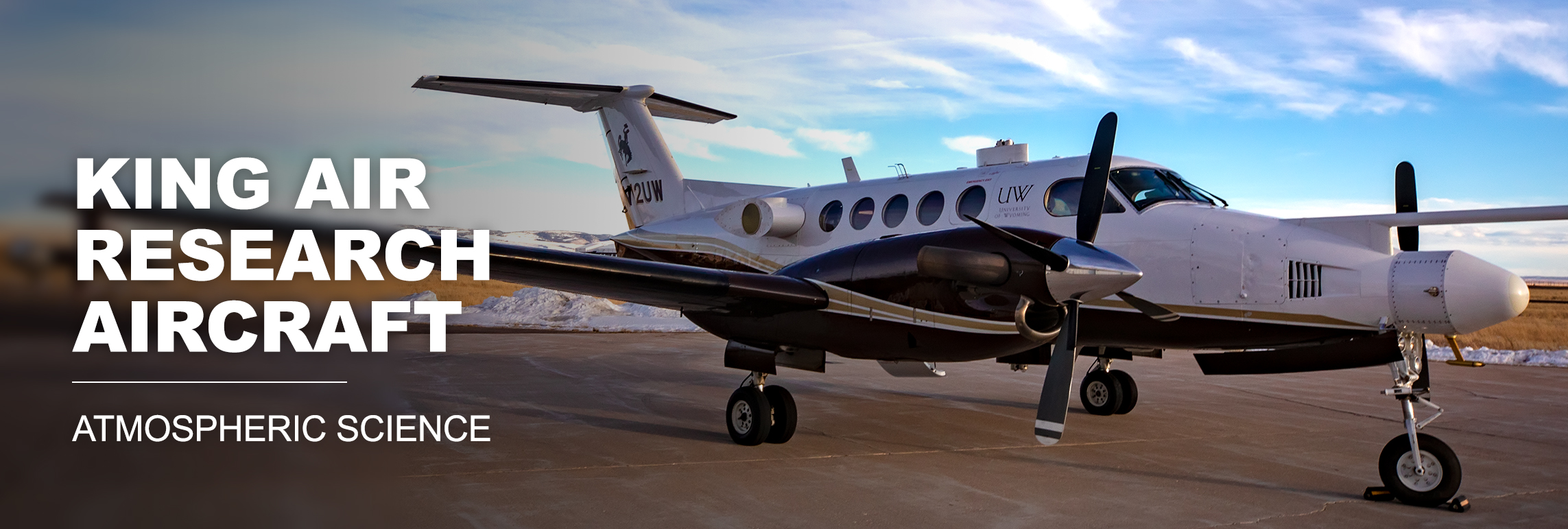Wyoming Cloud Radar (WCR) Overview
The University of Wyoming Cloud Radar (WCR) is an observational system for the study
of cloud structure, dynamics, and composition. Operating at 95 GHz (3 mm wavelength,
W-band), the radar provides high-resolution measurements of reflectivity, velocity,
and polarization fields. Depending on the antenna configuration, WCR can be operated
in various single- and multi-beam configurations. The WCR can be equally supported
by the Wyoming King Air and the NSF/NCAR C-130. One of the radar's advantages is that
it depicts reflectivity and velocity fields at high spatial resolution - on the order
of tens of meters.
Configuration: UWyo King Air and NSF/NCAR C-130 aircraft
Number of available systems: 1
Wyoming Cloud Radar (WCR) Contact
Dr. Coltin Grasmick / cgrasmic@uwyo.edu / (307) 766-4899
WCR Operations
To describe weather events during which collection is desired (i.e., clouds, precipitation,aerosol),
provide specific information for the radar targets. It will help us consider the capability
of the radar to provide quality data for them.
Radar antenna configuration options:
- The up/side-pointing antenna means that an external motorized mirror is employed to
direct the beam up or leave it to side. Thus for any data acquisition file only one
of this two directions can be recorded.
- If single-polarization data from the up or side beam is sufficient for the project
we recommend that the single-polarization option is selected. It does have some advantages
in comparison with the dual-polarization option.
Typical Operating Parameters:
- Maximum Range: 6-10 km
- Number of gates: 100 - 600
- Sampling along the beam: 7.5 m - 37.5 m
- Minimum sampling along the flight track: 4-5 m
- First data gate range from aircraft: ~100 m
- Minimum detectable signal: -25 to -37 dBZ at 1 km (depending on the active antenna
configuration and the dwell time)
WCR Data Requests:
On-site Radar Data Access
- During the field campaign we provide quicklooks of reflectivity and Doppler velocity
in PDF files via a project page on the WCR web site (http://www.atmos.uwyo.edu/uwka/wcr/projects.shtml)
- A preliminary processed data of the standard radar products (see below) in netCDF
files are also available.
- Typically, the quick looks and the netCDF data files are made available within 24
hours after a flight.
Standard processed data products made available after quality control include:
- Co-polarized reflectivity
- Cross-polarized reflectivity (if applicable)
- Mean Doppler velocity (radial velocity along each active antenna beam corrected for
aircraft motion)
- 3-dimensional spatial reference (radar platform location and speed, and beam pointing
directions)
If these are
not sufficient, contact
Coltin Grasmick to discuss. See
this page for
more detailed information describing the WCR.

